Circus Parade Wagons
Circus World is a key partner in the parade, lending its unparalleled collection of historic wagons to the event. Two-thirds of the circus wagons known to exist are in the collection of Circus World Museum, preserved for future generations to see.
The museum is located at the site of the original Ringling Bros. Circus winter quarters in Baraboo, Wisconsin. Collections in the museum include unparalleled holdings holdings of circus and carnival artifacts, a world-class research library, and over 200 historic circus wagons.

550 Water St
Baraboo, WI 53913
608-356-8341
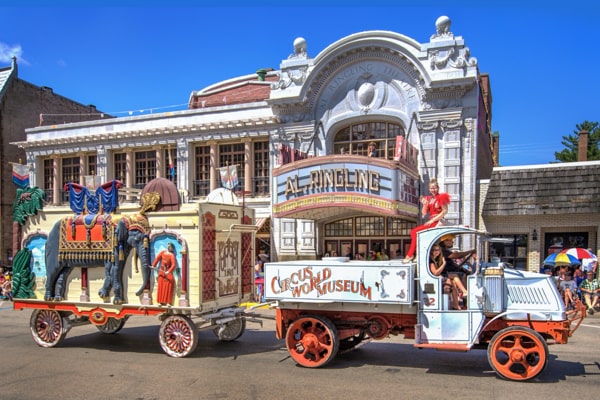
This tableau wagon, was built for the Al G. Barnes Circus which used it from 1921 through 1926. The elephant carvings were presented to Circus World in 1969, and placed on a new wagon body in 1987.
Photo courtesy of Bill Johnsen
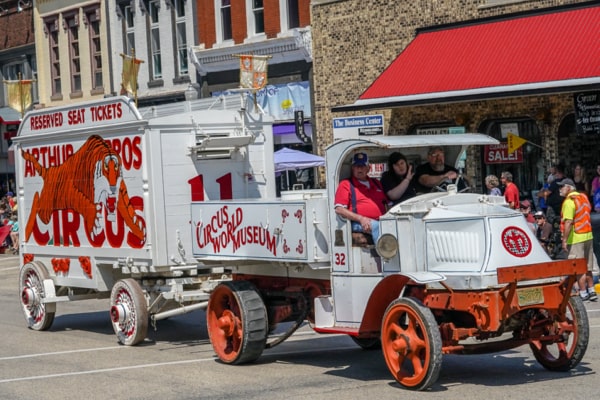
Photo courtesy of Tom Williams
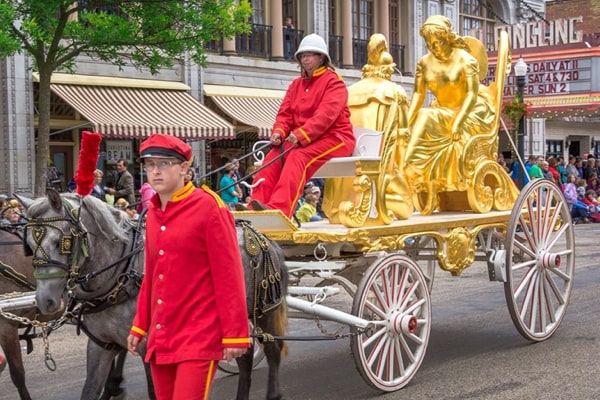
Photo courtesy of Bill Johnsen
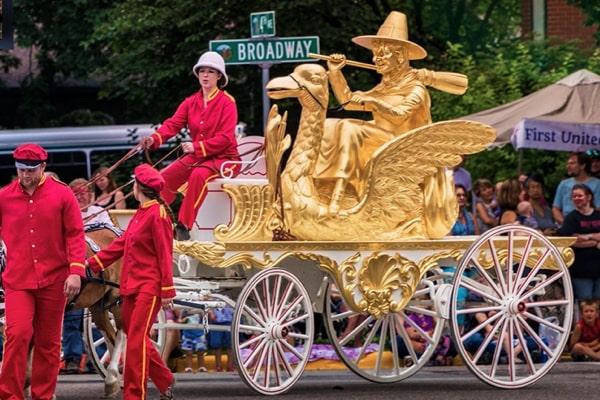
Fairy tales are bigger and brighter with this gloriously gilded Barnum & Bailey Mother Goose Pony Float. Built in 1882 for the Barnum & London Shows, this float was one of seven depicting characters from such favorite children’s stories as Little Red Riding Hood and Mother Goose. Three of the seven floats exist today, all in the care of Circus World.
Photo courtesy of Bill Johnsen
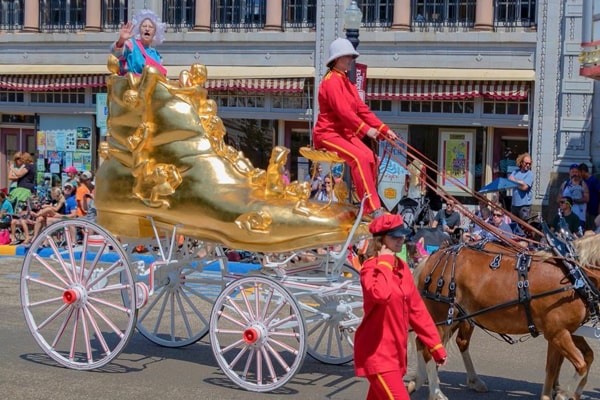
Fairy tales are bigger and brighter with this gloriously gilded Barnum & Bailey Mother Goose Pony Float. Built in 1882 for the Barnum & London Shows, this float was one of seven depicting characters from such favorite children’s stories as Little Red Riding Hood and Mother Goose. Three of the seven floats exist today, all in the care of Circus World.
Photo courtesy of Bill Johnsen
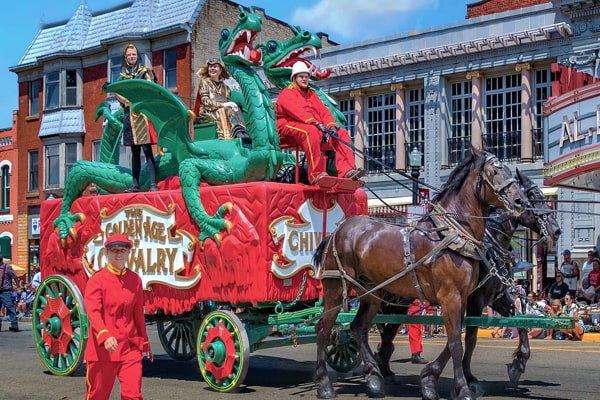
Photo courtesy of Bill Johnsen

The Barnum & London Tableau Cage Wagon, from Circus World’s unparalleled circus wagon collection, toured with the Barnum & Bailey Circus through 1918 when the show combined with the Ringling Bros. Circus. The carved figures on each corner are bearded men, thus giving the wagon the nickname the “Whiskers Cage.”
Photo courtesy of Bill Johnsen
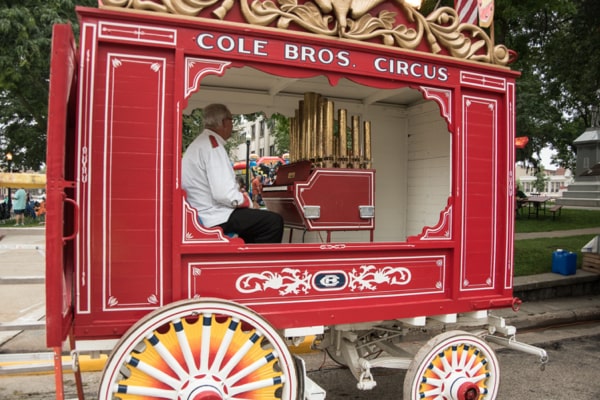
This magnificent wagon was built around 1915 to carry an air calliope for Fred Buchanan’s Yankee Robinson Circus. Found in shambles in 1950, the wagon was given to Circus World in 1965 and has been beautifully restored.
Photo courtesy of Tom Williams.
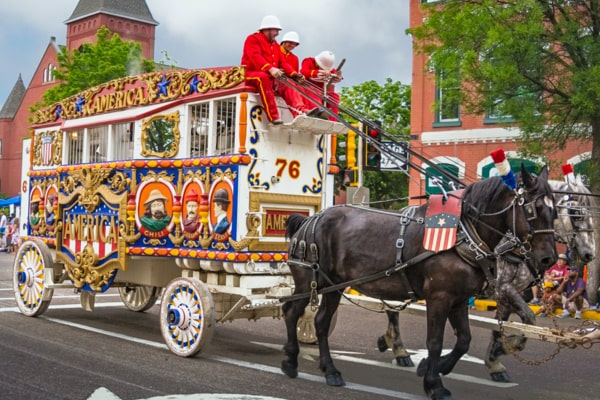
Photo courtesy of Bill Johnsen.
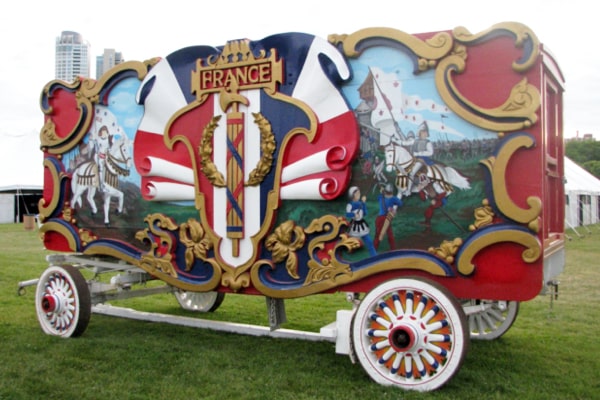
Photo courtesy of Circus World Museum

Photo courtesy of Bill Johnsen

This wagon served a double purpose, carrying bleacher seating between cities and then carrying performers in the parade. Stringers were one of the three components out of which the audience seating was constructed. When the wagon was unloaded at each site, the side posts of the wagon were removed, leaving a 20-foot long platform that was used as a portable stage during the parade. Circus World Museum’s stringer wagon was built in 1965 as a replica of the one used ca. 1915 to carry Native American displays for a Wild West show.
Overall Length 26′ – Width 8’8″ – Height variable – Weight 9,630 lbs.
Stringer wagons were one of several specialized baggage wagons used by circuses. The wagon in this photo carried tent poles.
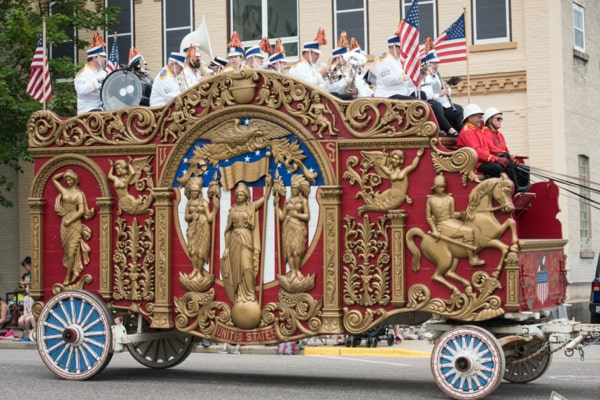
This elaborate 10,820 lb wagon was reconstructed to its original appearance in 1991. The “United States” Tableau typically carries riders clothed in patriotic wardrobe or interpretive military uniforms.
Photo courtesy of Mike Heath
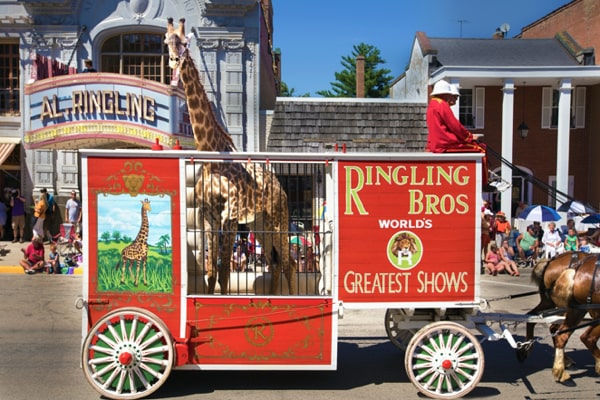
The Ringling Bros. Circus acquired a specially designed wagon for its 1893 touring season to house a giraffe named Mamie. Some years ago, Circus World re-created the Ringling Bros. Giraffe Wagon from an 1894 photograph. Here it features a Massai giraffe from the Timbavati Wildlife Park in Wisconsin Dells.
Photo courtesy of Bill Johnsen
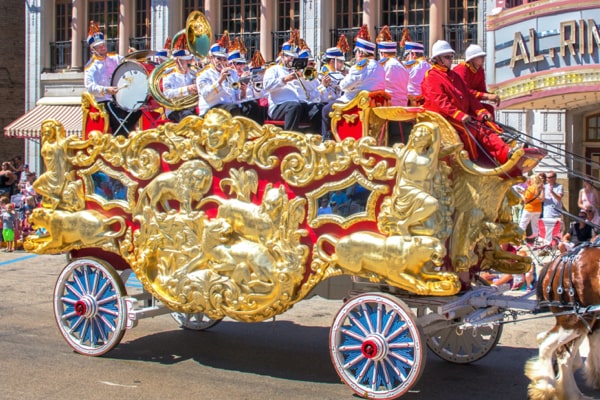
Photo courtesy of Bill Johnsen
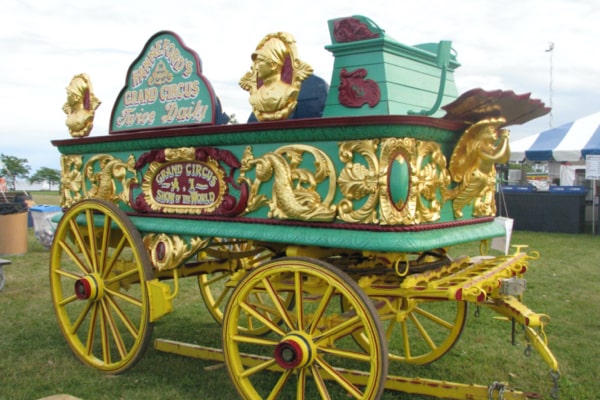
Photo courtesy of Circus World Museum

Photo courtesy of Bill Johnsen
